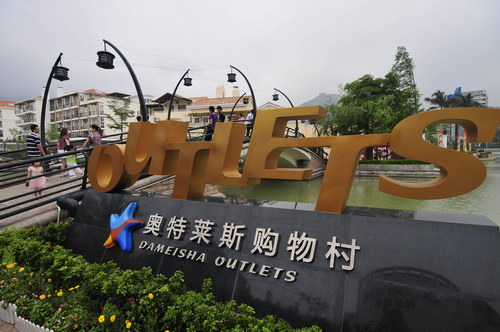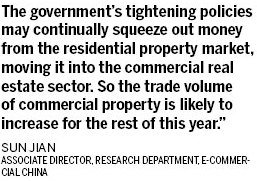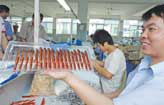Companies
HOPSCA: The new reality in realty
Updated: 2011-07-11 10:12
By Chen Jia (China Daily)
That's a complex of hotels, offices, parks, shopping malls, clubs and apartments to us
BEIJING - A new form of urban development is fast taking off across China.
Complexes of hotels, offices, parks, shopping malls, clubs and apartments, known as HOPSCA, are sprouting up as investment increases in commercial real estate.
 |
|
The HOPSCA-style Dameisha Outlets in Shenzhen, Guangdong province. The number of HOPSCA - complexes made up of hotels, offices, parks, shopping malls, clubs and apartments in China's big cities - is growing rapidly. [Photo/China Daily] |
They are being constructed in areas where communications and transport are good, often close to central business districts.
After the government announced policies to limit the number of residential homes people can buy to cool down the market, commercial real estate has become the latest fad for developers. The number of HOPSCA in China's big cities, including Beijing, Shanghai, Tianjin and Hangzhou, is growing rapidly.
Florentia Village, a complex of designer shops, was opened in June in Wuqing, a county between Beijing and Tianjin. Its location is in front of the high-speed train station, and it takes less than half an hour to reach both cities.
The "village" consists of malls with restaurants, and recreational centers as well as shops amid Italian style architecture. There is even a canal running through the entire village with gondolas, fountains and bridges as well as an arena.
"The aim for the project is to create a perfect destination for a shopping-day trip for families, friends and lovers with a lot of attractions within the village," said Jacopo Mazzei, chairman of the RDM Group, one of the joint developers of the project.
Sun Jian, associate director at the research department with E-Commercial China, said that investors now thought more about the comprehensive functions of commercial real estate projects, including traffic, environment and recreation facilities, resulting in the concept of HOPSCA.
|
|
 |
|
|
By the end of the first quarter of this year, the total area of HOPSCA in Beijing was 204.84 million square meters, forming 10 major business districts, which are mainly located in the east part of the city, according to the report.
"The government's tightening policies may continually squeeze out money from the residential property market, moving it into the commercial real estate sector. So the trade volume of commercial property is likely to increase for the rest of this year," said Sun.
The annual internal rate of return for HOPSCA investments in Beijing is about 15 to 20 percent, which is attracting an increasing number of private investments away from residential property, said Yin Baojun, vice-president of E-commercial China.
The Shanghai-based retailing giant Bailian Group has been an investor in commercial property developments. It said the rise in HOPSCA would help it to increase its presence in the store department sector.
The group bought some 20 hectares of land in Wuxi, Jiangsu province, in May to expand its outlets business. The property will allow people to shop and enjoy leisure activities inside. It is said to be large enough to meet the needs of people from the south of Jiangsu province.
Bailian also has a commercial property project in the Chongming district of Shanghai under construction. It will be completed in 2013.
Data from Cushman & Wakefield Inc, a global real estate information provider, showed that the total value of new commercial property in the first quarter of this year was more than 4.6 billion yuan ($710 million). Among the investors, 49.6 percent were from overseas.
In the coming months, private investments, funds from insurance companies and overseas investments are expected to rise because HOPSCA developers may find it hard to raise enough money just from bank loans, according to Yin from E-commercial China.
A report from the Chinese Academy of Social Sciences (CASS) predicted that HOPSCA will become a popular investment vehicle over the next five years because of the acceleration of Chinese urbanization.
In 2010, more than 10 big HOPSCA projects were started in Tianjin. Currently, more than 30 HOPSCA projects in Beijing are being built or planned. Hangzhou also plans to open 100 HOPSCA projects, 41 of which have been finished.
Tang Zhihao contributed to the story.

Specials

90th anniversary of the CPC
The Party has been leading the country and people to prosperity.

The write stuff
'Pen capital' goes back to drawing board for answers to economic changes taking shape in Zhejiang

Say hello to hi panda
An unusual panda is the rising star in Europe's fashion circles
